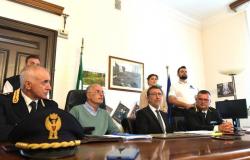«By analyzing 7,670 seismic events that occurred in 18 years, from January 2005 to October 2023, and detected by the INGV Vesuvian Observatory, it was possible to highlight that below the Solfatara and Pisciarelli areasup to a depth of about 2 km, the high fracturing of the rocks and the presence of hydrothermal fluids favor the occurrence of earthquakes of low magnitude (up to Md=3) compared to those of higher magnitude (up to Md=4.4).
Below 2 km, however, for the surrounding areas the relationship between earthquake magnitudes is consistent with what has been observed on a global scale; that is, the estimated value of b is very close to 1″.
He explains it Vincenzo Convertito, researcher at the National Institute of Geophysics and Volcanology. The discovery of variations in the relationship between earthquake magnitudes within the caldera of the Campi Flegrei represents an important step forward for the monitoring of volcanic areas.
Vincenzo Convertito he is also co-author of the research “B value enlightens different rheological behavior in Campi Flegrei caldera”, carried out by a team of researchers from INGV in collaboration with the University of Campania Luigi Vanvitelli, and published in the scientific journal Communications Earth & Environment of Nature, whose objective is to understand how the characteristics of the earth’s crust at the Campi Flegrei caldera, the stress to which it is subjected and the temperatures that characterize it, can influence the number of earthquakes and their magnitudes.
THE Phlegraean Fieldsa well-known collapsed caldera west of the city of Naples, has a central part that continues to slowly rise and fall in the phenomenon called ‘bradyseism’. This ground movement is accompanied by earthquakes which cause concern.
© ALL RIGHTS RESERVED
Read the full article at
The morning





